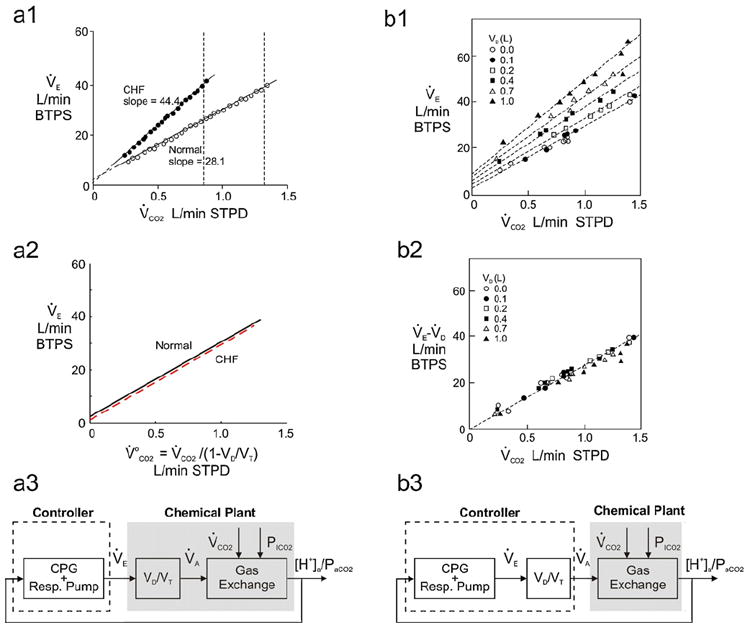Fig. 2.

Apparent metabolic CO2 load in chronic heart failure (CHF) and dead space loading. a1: Linear V̇E − V̇CO2 relationship in a healthy subject and a CHF patient from rest to moderate exercise. The V̇E − V̇CO2 slope in CHF is significantly larger as a result of increased physiological (mainly alveolar) VD/VT, without any appreciable change in Y-intercept. Vertical broken lines indicate the corresponding respiratory compensation points when the linear V̇E − V̇CO2 relationship begins to curve upwards. Adapted from Mezzani et al. (2009) with permission. a2: In both healthy subject and CHF patient, exercise V̇E is tightly coupled to apparent metabolic CO2 load . a3: Control system block diagram corresponding to the control law shown in panel a2. b1: Dead space loading increases the slope as well as Y-intercept of the V̇E − V̇CO2 relationship in healthy subjects. b2: “Alveolar ventilation” (=V̇E − V̇D) is tightly coupled to V̇CO2 for varying sizes of external dead space. Panels b1 and b2 are adapted from Ward and Whipp (1980) with permission. b3: Control system block diagram corresponding to the control law shown in panel b2.
